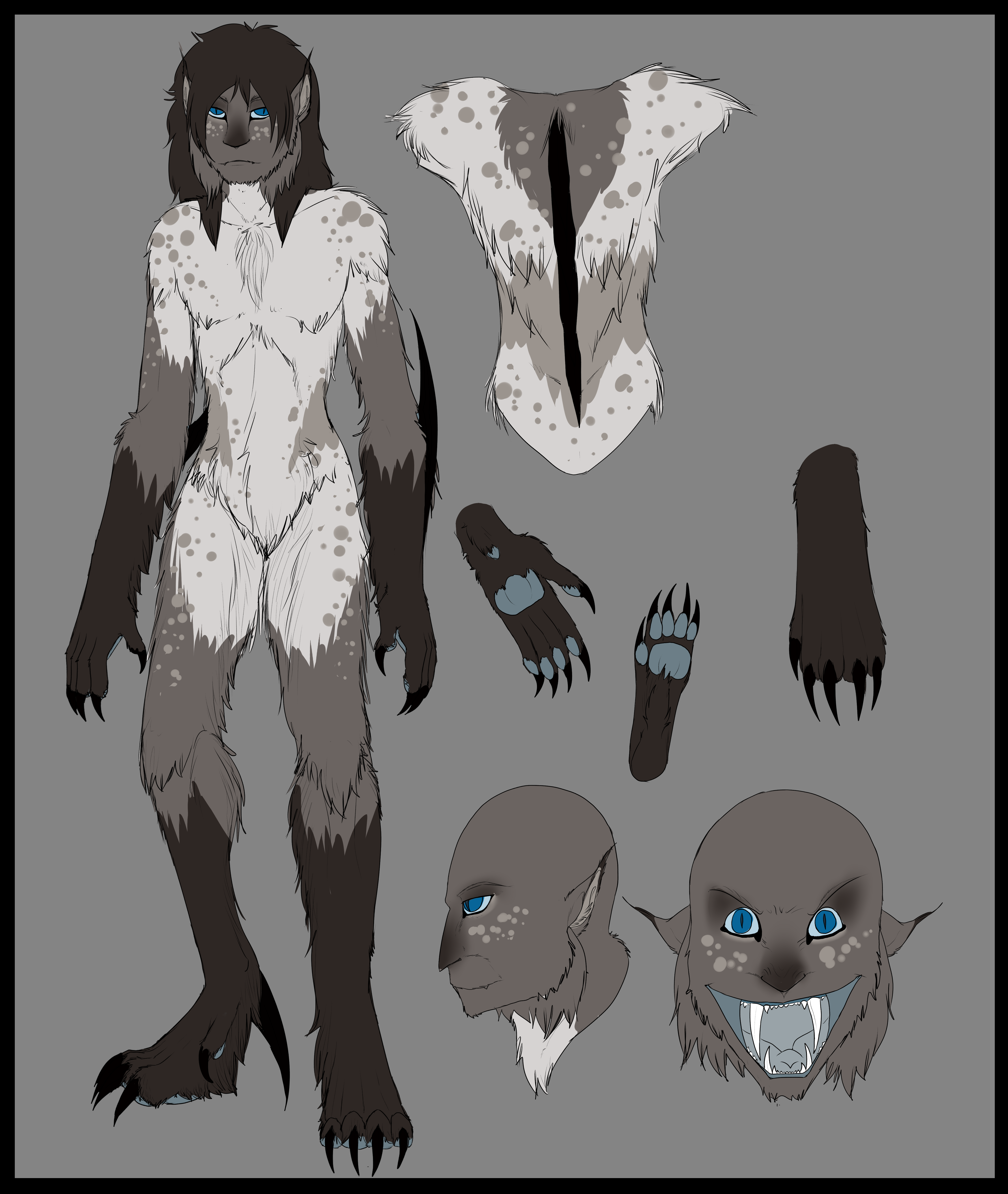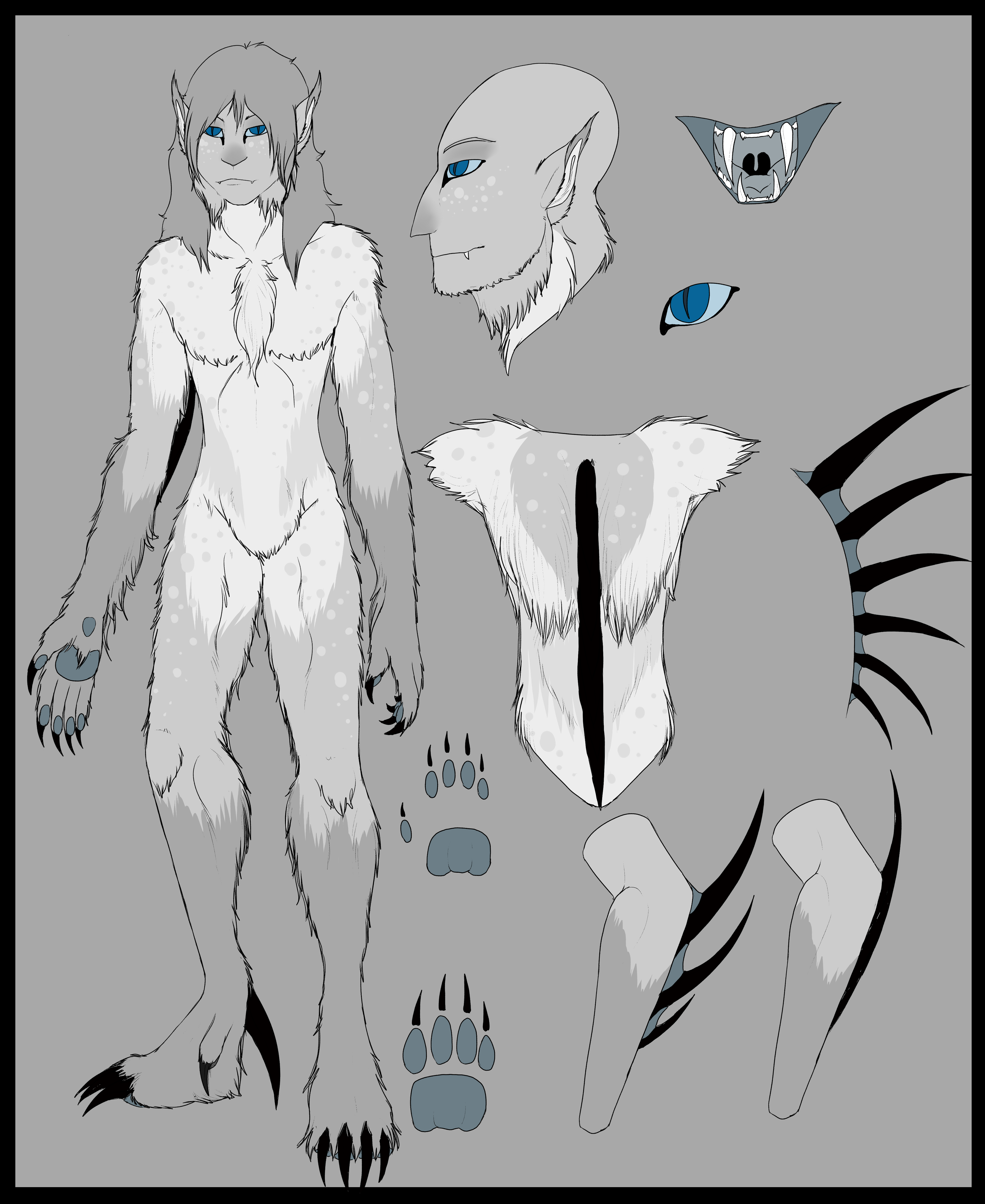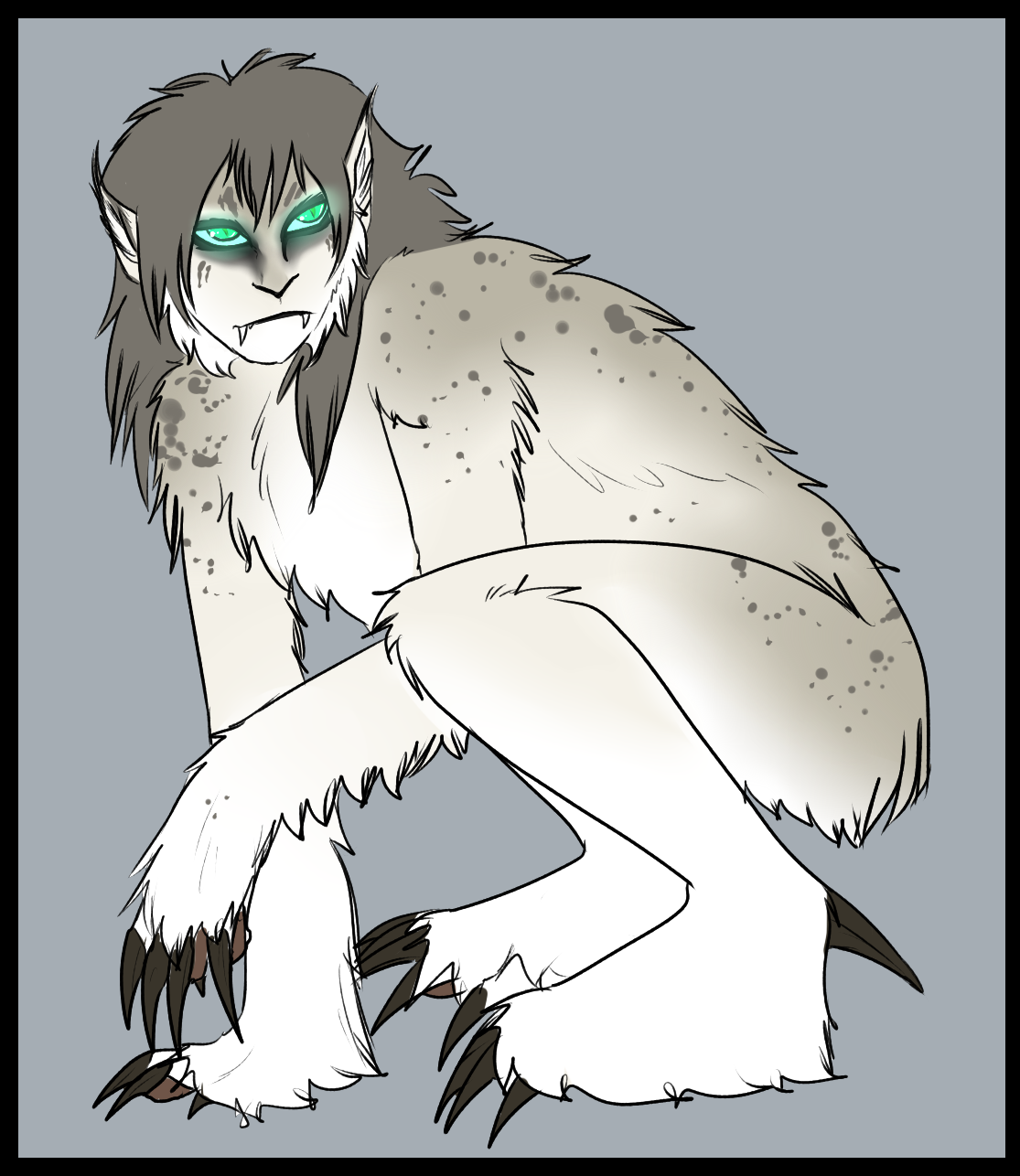Subtypes
Tundra (Kivuuli Subtype)
The Tundra or Snow Kivuuli is a Kivuuli that evolved and adapted to extreme cold, snow and ice. Some parts of Between are extremely cold and full of ice and snow. Being between dimensions, all sorts of places have different environments connected to the dimension or world that is the closest to a certain area of Between.
Like Maltese, they came from a fairly small gene pool and evolved in isolation. This is because the Colony they originated from were small as compared to most Kivuuli. They were driven out of prime lands by bigger, stronger and fiercer Kivuuli. Tundra Kivuuli are usually in muted soft browns and grays like the arctic fox. Like standard Kivuuli, they often have spotting and striping. It can appear lighter or darker than their base coat. Because of their speed and strength, they do not need white fur to blend in to hunt, though they are known to bury themselves in snow drifts and lie in wait to ambush their prey.
This gradually forced them to the most inhospitable areas of Between. They found there was less competition for territory and food in the cold icy isles, and fewer Kivuuli fought over dimensional rifts leading to worlds full of snow and ice. Those of lighter color and thicker fur survived, whereas those that were darker in color stood out too much to hunt, and those with thinner fur froze to death. Through natural selection, they eventually lightened in color until they took in a more yellowish white tone and their fur grew into thick, three layered insulating fur. The underfluff, extremely thick and warm, the longer outer fur, and a bristly layer over that to help slough off ice and snow. From there, they thrived, and quickly grew in number, quickly filling the polar and arctic niche in not only Between, but many worlds connected to Between.
Those with spurs pointing downward had fewer slips and falls, and thus this feature remained.
These Kivuuli don’t teleport often, preferring to run on all fours and are even more feral and wild than Maltese, nearly atavistic and are considered closer to their Protean ancestors aside from size. Unlike Maltese, they are not friendly. They are highly territorial and tend to gather in small pack-like colonies of ten to twenty individuals. Usually lead by a female with several males to do the hunting and bring her food. She will mate, have the omegas care for the kit, and mate again. Other females are permitted to remain within the Colon, but if they challenge the alpha female, the fight always ends in the loser being chased out of the territory. Females generally leave their own colony during heat to seek out a strong male from another colony, since many colonies are made up of related individuals.
Unlike most Kivuuli, it is not uncommon for males to live and hunt alone and nomadic. The Arctic Kivuuli, in fact, is one of the only Kivuuli that doesn't go completely mad when alone, though they do still end up hunting with packs of arctic wolves, or even bears to ease their solitude when alone. Lone males generally wander in search of a viable female to mate with. These lone males are likely responsible for the subspecies to still be alive, since they allow for more genetic diversity. Tundra Kivuuli do much better alone than their more social cousins.
Other Kivuuli do not venture into their lands, since the harsh cold is hard to hunt in and pierces right through their thin fur coats.
These Kivuuli, while once smaller, are now around the same size as regular Kivuuli and have a thick layer of fat beneath their skin to keep warm.

Winter Coat
